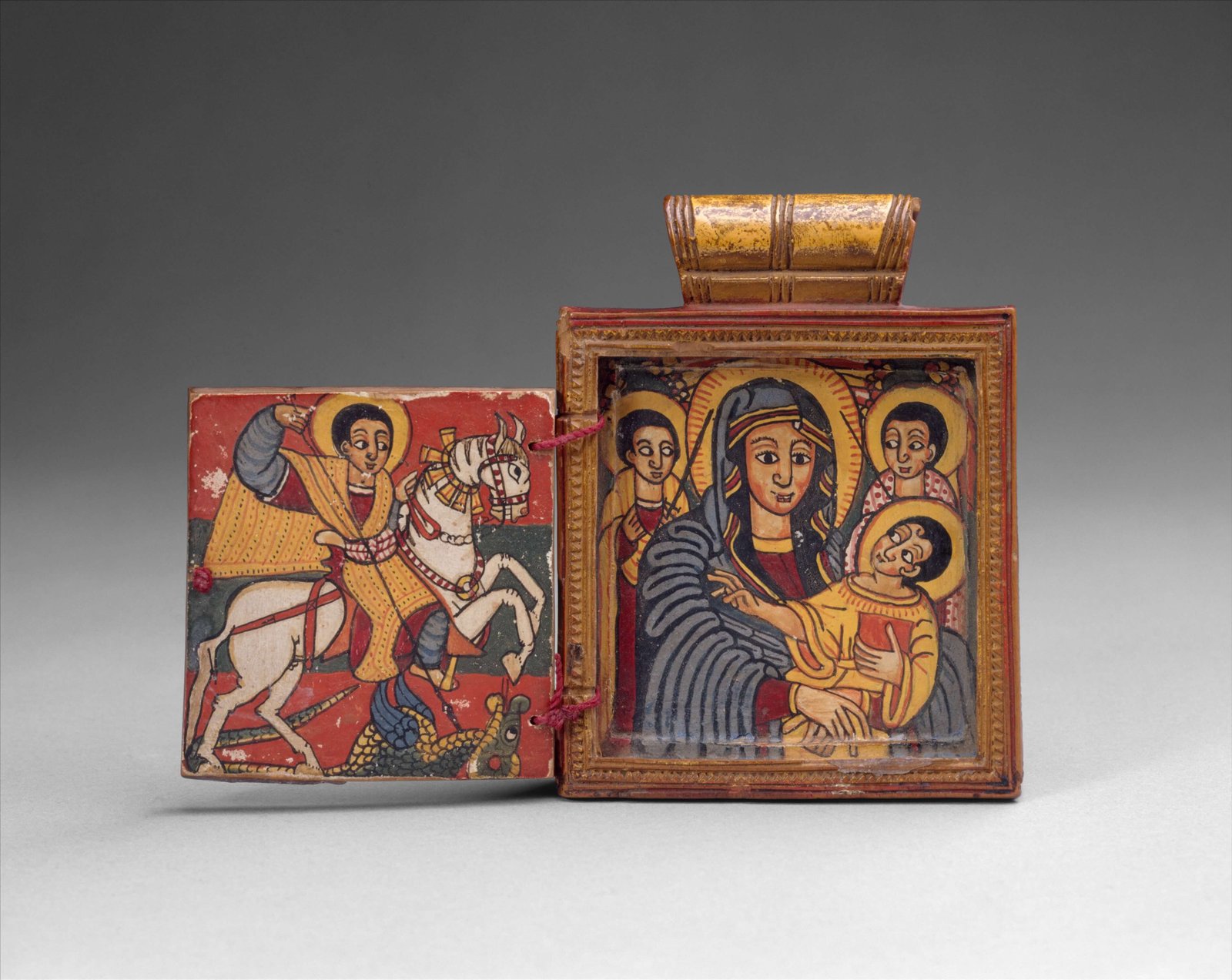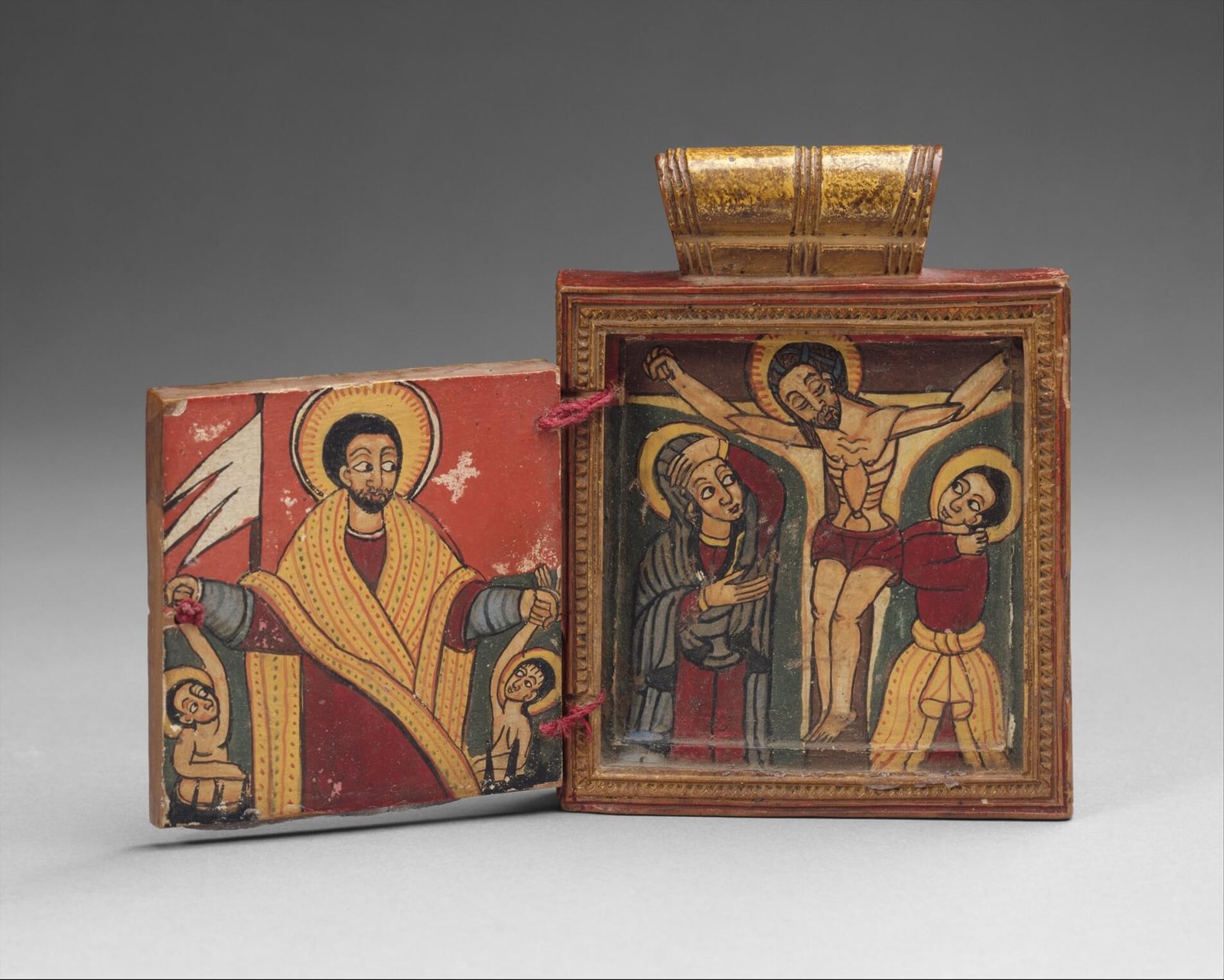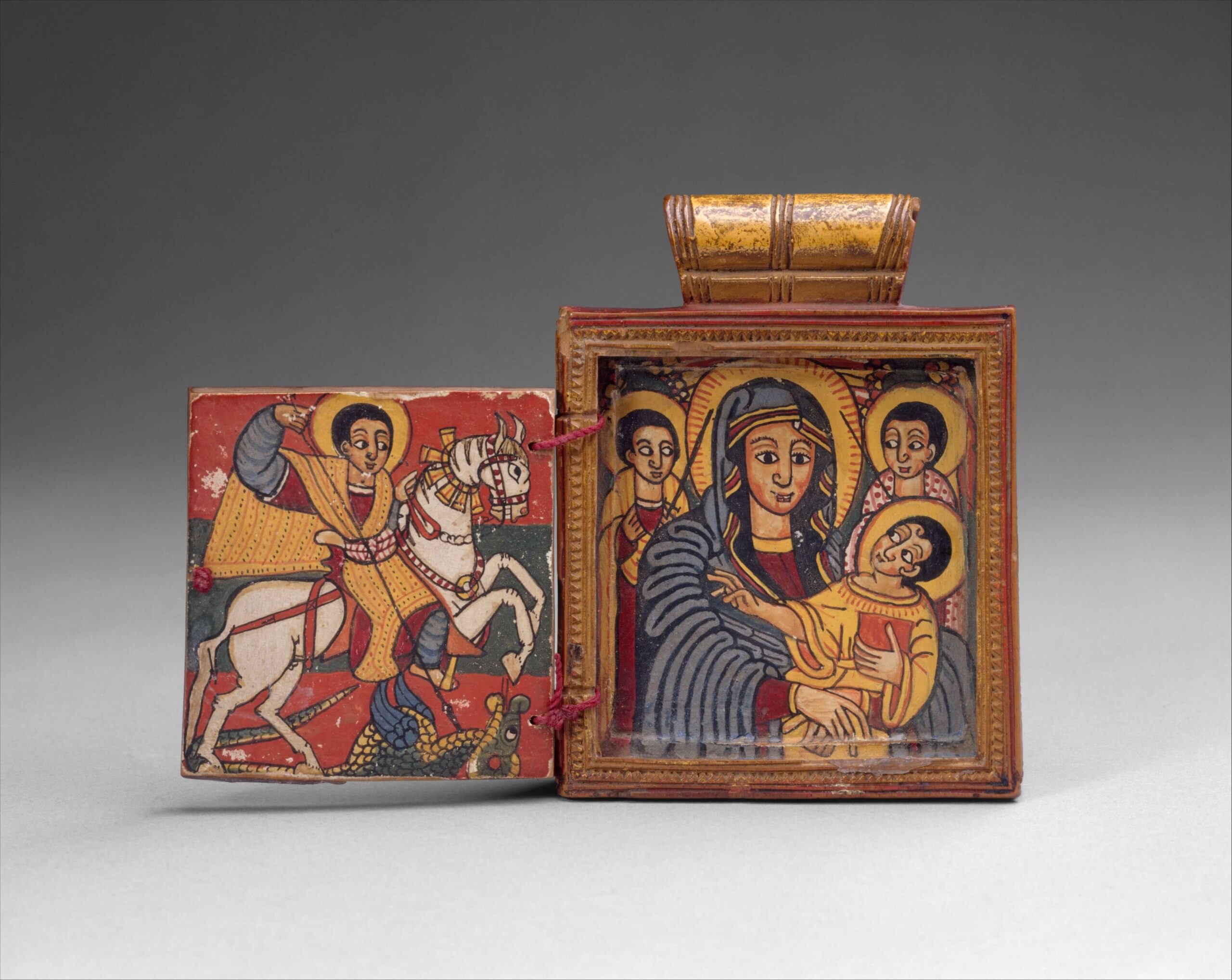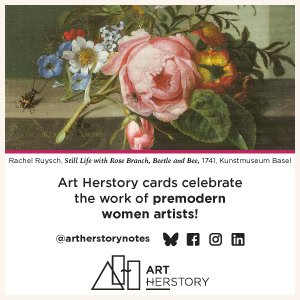
I visited the Metropolitan Museum of Art a few weeks ago for a preview of The World Between Empires. I saw so much amazing stuff there, but one thing in particular seemed to jump out and said “write about me!”. This work caught my eye in small gallery just inside the Arts of Africa, Oceania, and the Americas wing. It’s a double-sided religious diptych from 18th-century Ethiopia. (I later saw this object again in Feb. 2024 in the Met’s monumental Africa & Byzantium exhibition.)
I didn’t know anything about Ethiopian Christian art when I first saw this piece, but I became quickly fascinated. What I did already know is that the Ethiopians have one of the oldest Christian traditions in the world. They has some really spectacular rock-hewn churches, which are unique to that country. Ethiopian Christianity is Orthodox (like Greece and Russia, but the Ethiopian church is separate from all others), so it’s rich in painted icons depicting Mary, Jesus, saints, and the archangels (who are particularly popular in this tradition). I have since learned some more from the excellent Africa & Byzantium exhibition catalog, but this type of art isn’t written about nearly as often as it should be, in my opinion.

This small work is a diptych (two-paneled painting) with religious scenes on the front and back It was meant for a wealthy patron to wear on a necklace as an object of personal devotion. One side depicts the Virgin Mary and Christ Child with archangels as well as St. George, while the other side shows the Crucifixion and Christ resurrecting Adam and Eve shortly after His own Resurrection. All of these are pretty common scenes, but it was the mood of the paintings that caught my attention. There’s something about them that’s so deeply pleasant – even joyful – to look at, even the Crucifixion scene. I also love the way the figures are represented. The artist used bright colors with black outlines. The shapes and modelling are pretty economical but effective. The backgrounds are quite plain, but there are also more detailed patterns like the Virgin’s drapery, the design on Christ and St. George’s tunics, and the scales of St. George’s dragon. I find myself very much reminded of the medieval manuscript illuminations I love so much. (The Ethiopians made some great examples of those, too.) Since it was meant to be worn, the diptych only measures a few inches in each direction. However, its bold colors and cheerful-seeming figures still managed to catch my attention as I was walking past it at a distance.
You can read what the Met has to say about the icon here.
More Ethiopian religious art I have seen and enjoyed







